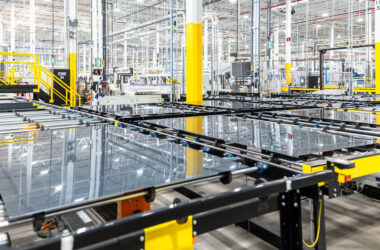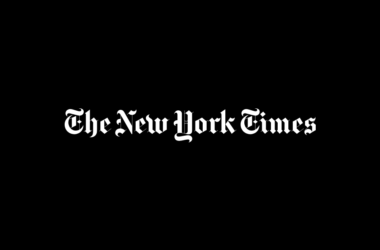Investors do not expect the Federal Reserve to raise interest rates again, and officials have made it clear that they see further increases as unlikely. But one important takeaway from recent Fed commentary is that unlikely and inconceivable are not the same thing.
After the central bank held rates steady at 5.3 percent last week, the Fed’s chair, Jerome H. Powell, delivered a news conference where what he didn’t say mattered.
Asked whether officials might raise interest rates again, he said he thought they probably would not — but he also avoided fully ruling out the possibility. And when asked, twice, whether he thought rates were high enough to bring inflation fully under control, he twice tiptoed around the question.
“We believe it is restrictive, and we believe over time it will be sufficiently restrictive,” Mr. Powell said, but he tacked on a critical caveat: “That will be a question that the data will have to answer.”
There was a message in that dodge. While officials are most inclined to keep interest rates at their current levels for a long time in order to tame inflation, policymakers could be open to higher interest rates if inflation were to pick back up. And Fed officials have made that clear in interviews and public comments over the past several days.
Neel Kashkari, president of the Federal Reserve Bank of Minneapolis, said on Tuesday that he was wary about a scenario in which inflation gets stuck at its current level, and hinted that it was possible that rates could rise more.
Michelle Bowman, a Fed governor who tends to favor higher interest rates, has said she remains “willing to raise” borrowing costs if progress on lowering inflation stays stalled or reverses. And Thomas Barkin, president of the Federal Reserve Bank of Richmond, said that he thought that rates were weighing on the economy but that “time will tell” if they were doing so sufficiently.
Officials still roundly expect the economy to slow given today’s rate setting, which they think is weighing on demand as it makes it more expensive for businesses to borrow money to expand and for households to buy on credit. While progress on lowering inflation has stalled out lately, Fed policymakers have been clear that the most likely outcome at this stage is that they will just keep interest rates at today’s level for some time in order to gradually hit the brakes on growth and bring price increases back down to their 2 percent target.
Policymakers have also said that while they were determined in 2022 and 2023 to wrestle inflation lower even if doing so came at a steep economic cost, they are now taking a more careful approach. Inflation is down sharply from its 2022 highs. Weighing inflation down rapidly is less urgent for the Fed in light of the moderation, so officials have the freedom to tread cautiously and try to avoid causing a recession.
But while Fed officials are settling in for a pause as they wait for their policy to squeeze the economy enough to vanquish rapid price increases, that stance could change. If inflation begins to cool decisively again, they expect to cut rates. And if inflation surprises them by heading back up, rate increases remain possible.
Fortunately for anyone waiting for lower credit card, auto or mortgage rates — and hoping that borrowing costs won’t shoot up further — most economists do expect inflation to slow in the months ahead, and essentially none expect it to rise.
Inflation has gotten stuck in recent months after coming down sharply last year, in part because housing costs have proved surprisingly stubborn and as insurance costs have picked up. But economists in a Bloomberg survey think that could change starting next week: Fresh Consumer Price Index data are expected to show that overall inflation dipped to 3.4 percent in April, down from 3.5 percent in March.
By the end of the year, economists expect that measure to come down to 2.9 percent. In fact, not a single economist in another Bloomberg survey expected it to be above its current level by the final quarter of 2024. And the Fed’s preferred inflation index, the Personal Consumption Expenditures index, is expected to be even lower, at 2.5 percent.
“Everyone’s kind of in the same camp — but I think it’s for good reasons,” said Gennadiy Goldberg, a rates strategist at TD Securities, noting that economists are fairly confident that rent inflation will slow and that insurance prices should eventually moderate.
“The confidence level is fairly high that inflation will come down by the end of the year,” he said. “The question is whether it will come down fast enough or early enough for the Fed to cut rates this year.”
That outlook for cooler inflation explains why investors also widely expect interest rates to go down, not up, in the months to come. Markets have sharply reduced their expectations for multiple rate cuts this year, but they see a solid chance of one or two decreases by the end of the year. They see essentially no chance of a rate increase.
But while it is hardly anyone’s expectation, there is always a risk that inflation could pick back up. Geopolitical issues could send gasoline prices higher, which could then bleed into other products and services like airfares. Or — more worrying for the Fed — the economy could heat back up, allowing companies to lift prices for goods and services more rapidly.
That second scenario seems to be what officials are paying attention to, and some have suggested that they would be open to raising borrowing costs if they became convinced that today’s interest rate levels were not doing enough to weigh growth and prices down.
“If we need to hold rates where they are for an extended period of time to tap the brakes on the economy, or if we even needed to raise, we would do what we needed to do to get inflation back down,” Mr. Kashkari said on Tuesday.
The upshot? Investors, economists and Fed officials themselves widely expect that the central bank’s next move will be to cut interest rates. But that is because they are confident that inflation is poised to come down. If that outlook were to prove wrong, things could change.




